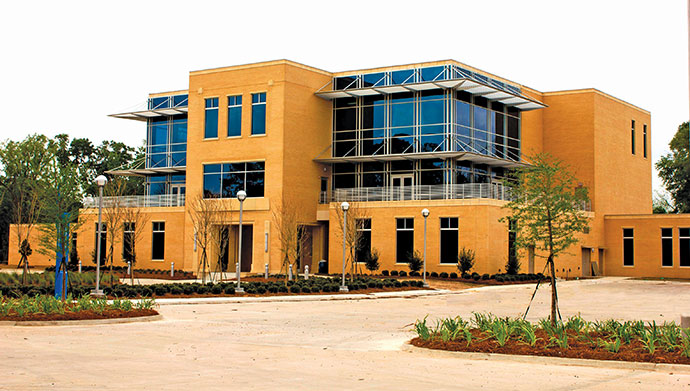Never before has one building symbolized so much.
The SEED Center in Lake Charles, La., represents the culmination of a regional partnership aimed at bringing new business and industry to Southwest Louisiana.
The Southwest Louisiana Entrepreneurship and Economic Development Center at McNeese State University is more than just a symbol, however. It is a working headquarters where key players in economic development meet to craft the strategic and tactical plans that are transforming the entire region.
Judging from the returns of the past year, those plans appear to be working quite well.
Throughout the five-parish region known as Southwest Louisiana, a total of $62 billion in new construction is either planned or taking place, and the vast majority of it will soon deliver much-needed infrastructure to the nation’s petrochemical industry.
From Sasol North America’s $21-billion investment into an ethane cracker, derivatives complex and gas-to-liquids facility in Lake Charles to Cheniere’s $20-billion investment into its Sabine Pass LNG complex in Cameron Parish, the region now boasts the single-largest concentration of new energy plant projects.
The sudden surge in building activity has catapulted Greater Lake Charles — a metropolitan area of 300,000 people — into one of the top-performing MSAs in the country.
On Jan. 30, IHS Global Insight ranked Lake Charles No. 31 in the nation on a list of metro areas’ expected growth. Lake Charles is projected to grow its economy by 3.7 percent this year, topping every other MSA in Louisiana. By comparison, IHS ranked New Orleans 54th and Baton Rouge 133rd.
Lake Charles also ranks as one of the top job-growth markets in the country. IHS placed Lake Charles 42nd in the U.S. in expected employment growth. By 2019, Southwest Louisiana is projected to create 20,000 new construction jobs, 5,000 new permanent jobs and 8,000 new indirect jobs.
In fact, employment growth in the region has already begun. From December 2012 to December 2013, Lake Charles recorded the second-largest jump in construction employment in the nation, 28 percent, according to the Associated General Contractors of America. The region added 2,700 new construction jobs last year, the AGC reported.
A Busy Hub for Innovation
The hub of it all is the new SEED Center, created by a partnership of the Calcasieu Parish Police Jury, Southwest Louisiana Economic Development Alliance, City of Lake Charles and McNeese State University. Funding from federal, state and local sources made it possible for the $13-million facility to open last year debt free.

Lake Charles is known nationally for its abundance of parks and other recreational amenities.
Photo by Lindsey Janies Photography
The building houses a variety of business development initiatives, including: the SEED Business Incubator and Entrepreneurial Center; Louisiana Small Business Development Center at McNeese; Institute for Industry-Education Collaboration; McNeese Student Innovation Center and Business Incubation Studio; McNeese Student Internship Program; and the McNeese Office of Research and Sponsored Programs and Dore School of Graduate Studies and Extended Education.
More important than the programs housed inside the building, however, are the results produced outside it in the community.
George Swift, president and CEO of the Southwest Louisiana Economic Development Alliance, says the fruit of the facility and the partnership that made it possible is “a community where opportunity is growing.”
At the forefront of that opportunity is Sasol, a South Africa-based company that’s bringing the largest capital investment in the history of Louisiana industry.
Mike Thomas, president of Sasol North America, says his company selected Calcasieu Parish over multiple sites considered throughout the U.S. “Sasol focused on the U.S. Gulf Coast because of its robust energy and chemicals industry and access to the best natural gas infrastructure in North America,” says Thomas. “We specifically looked at Louisiana because it offered a business-friendly climate, predictable regulatory structures and attractive incentives.”
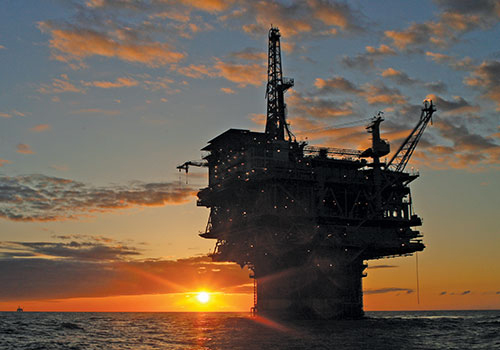
The oil and gas industry forms the lifeblood of the Southwest Louisiana economy.
Photo by Lindsey Janies Photography
Thomas says the deal came together as the result of close cooperation between multiple organizations. “In 2011, Louisiana Economic Development, the Port of Lake Charles and the Southwest Louisiana Economic Development Alliance worked with Sasol to find an ideal location for these projects,” he notes. “Sasol used tools provided by LED and its partners, including the geographic information system mapping technology, to complete an analysis of different properties in Southwest Louisiana. The GIS technology enabled Sasol to find a site that met all its requirements in six to 12 months less than a traditional site evaluation approach.”
The planned new facilities will be located next to Sasol’s existing plant in Calcasieu Parish and will create more than 5,000 jobs at peak construction, more than 1,200 full-time permanent jobs and thousands of indirect jobs.
To help meet the increased demand for workers, Louisiana is investing $20 million in a SOWELA Technical Community College training facility that will be used by Sasol to support its workforce needs.
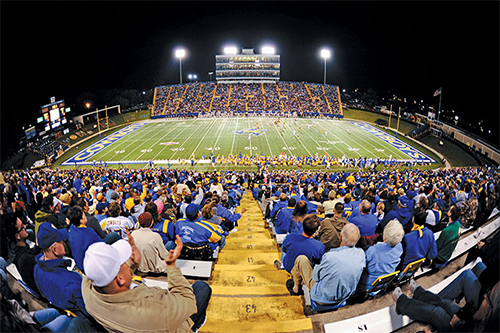
The McNeese State University Cowboys continue a longstanding tradition of quality football in Louisiana.
Photo by Lindsey Janies Photography
Higher-Ed Partners Form Workforce Foundation
McNeese State University and SOWELA Technical Community College form the backbone of higher education and workforce development in Southwest Louisiana.
With an enrollment of 8,300 students, including 400 from other countries, McNeese State is the largest four-year university in the five-parish region.
“We have been very involved in working with industry leaders in Lake Charles,” says Dr. Philip Williams, president of McNeese State. “If you need a nurse in this area, 75 percent of the time that hire will be a McNeese graduate. Some 70 percent of new teacher hires in Southwest Louisiana are McNeese graduates.”
Williams says the SEED Center is “a unique facility. We view it from the innovation curriculum side. The innovation lab is located in this facility. Only two such programs exist in the country. The other is at the University of Maine. A capstone course brings everything together in a single project. The student ends up with a business plan that is commercially viable. At McNeese, you can major in chemistry and minor in innovation. You graduate from here with skills that are flexible and nimble. We call it entrepreneurship for everybody.”
SOWELA, meanwhile, serves as the region’s primary workforce training arm. With an enrollment of around 3,000 students, SOWELA equips students for the workforce at the school’s new campus at Chennault International Airport in Lake Charles.
“The state of Louisiana will have spent over $60 million on this campus in a little over four years,” says Dr. Neil Aspinwall, chancellor of SOWELA. “The image of our school is changing. We are a comprehensive community college. Our enrollment grew 22 percent from 2012 to 2013.”
Graduates from SOWELA with associate’s degrees make $60,000 a year in petrochemical jobs. In many cases, notes Aspinwall, people with bachelor’s degrees are coming back to SOWELA to earn associate’s degrees and in turn improve their pay.
“We have a great relationship with McNeese State,” he says. “Our philosophy here is continuing education for everyone.”
Richard Smith, vice president of workforce development for the Southwest Louisiana Economic Development Alliance, says a major goal of both SOWELA and McNeese is to train the workforce that will fill the need for more than 20,000 construction workers by 2016.
“We plan to train around 12,000 workers,” says Smith. “We have 6 percent or less unemployment. We want to make sure our people have access to the tools they need to develop the skills they need to get into an upwardly mobile career field.”
“We’ve already had a number of successes in our workforce preparation efforts,” Thomas says. “LED’s Fast Start Program has developed a comprehensive Workforce Solutions Plan for Sasol to ensure that we have qualified applicants with proper screening in place. The support of the Louisiana Workforce Commission has also been tremendous. Its Workforce Investment Council has created a specialized online application to meet local industry needs.”
Ports Back Petrochemical Growth
In nearby Cameron Parish at Sabine Pass, Cheniere has already invested $12 billion over the last 18 months into its LNG expansion. The firm currently has 2,500 people working on site and is increasing its construction staff by 250 workers a month, according to Cheniere CEO Charif Souki.
Cheniere received regulatory approval for the project in April 2012 from the Federal Energy Regulatory Commission. Upon completion, the plant will be the first of its kind in the contiguous U.S. capable of exporting natural gas in liquefied form.
Currently, Cheniere is capable of storing close to 17 billion cubic feet of gas at its Sabine Pass terminal.
Supporting all of this industrial activity is a network of seaports and airports designed to move commerce quickly and efficiently in and out of the Gulf Coast region.
The juggernaut of this logistics infrastructure is the Port of Lake Charles, the 11th busiest port by cargo tonnage in America. In addition to providing critical transportation services for industrial end-users, the port provided sites for Sasol, G2X, Lake Charles Clean Energy, Trunkline LNG, IFG and the $500-million, under-construction Golden Nugget casino and resort hotel.
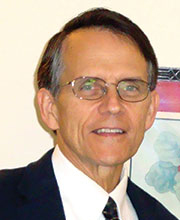
“The Lake Charles area has always had a small-town camaraderie. That was very evident in the wake of Hurricane Rita in 2005. The whole region pulled together in the aftermath of that storm. You don’t that in every city.”
— Lake Charles Mayor Randy Roach
The port is also a partner in a new housing project that will provide temporary homes for 4,000 construction workers in Lake Charles.
“This new employee village will serve 12,000 meals a day to the workers building these huge new plants at Sasol, Cheniere, G2X, Trunkline LNG and other industrial sites,” says Bill Rase, director of the Port of Lake Charles. “It will take about a year to complete construction, but upon completion this village will meet a critical need in our community for temporary workforce housing.”
To keep up with all this expansion activity, the port is expanding too. “We will spend $274 million on port infrastructure over the next five years,” says Rase. “We have added two loops in our rail track for unit trains; our new gate will open in about a month; and we are opening a new Command and Control Center along with our U.S. Customs and Border Patrol expansion. Plus, we will tear down and redo Berth 1 at our marine terminal — a $22-million project.”
The port still has 100 acres available for development, and Rase says economic growth is the port’s No. 1 goal. “The port, the community and the Alliance all work very hard to achieve a common goal: economic development for the area,” Rase says. “We don’t have to go through a lot of hurdles to get a project approved. We can tell people within 90 days whether we can do a project or not. All of the entities in Southwest Louisiana work very well together.”
Chennault Attracts Expanding Firms
At nearby Chennault International Airport, executive director Randy Robb says that expansion is the operative word. “We are building a new $3.5-million air cargo building on site, a $21-million large hangar and a $2.9-million corporate hangar and GSE facility,” he says. “We are also spending $10 million of FAA money on a taxiway widening so that it can be used as an alternate runway.”

The sun sets over one of the many bridges in Southwest Louisiana. Rivers, bayous, marshes and bays cover the region.
Photo by Lindsey Janies Photography
With a 10,700-foot runway and 1.5 million sq. ft. of hangar and other facility space, Chennault is a pivotal asset for supporting Southwest Louisiana’s rapid industrial growth. The airport, which has a total economic impact on the region of $232 million a year, is also hosting a good portion of this growth on site:
- Northrop Grumman, which employs more than 650 workers on site, intends to make Chennault its Center of Excellence for Technical Services and Repair Operations. NG secured a significant deal when the U.S. Air Force awarded the firm a $3.2-billion KC-10 air tanker MRO contract.
- AAR, which also does MRO work at Chennault, plans to expand its local workforce from 130 to more than 800 in coming years. Focusing on wide-body jets, AAR is the No. 1 MRO in the nation and No. 3 in the world.
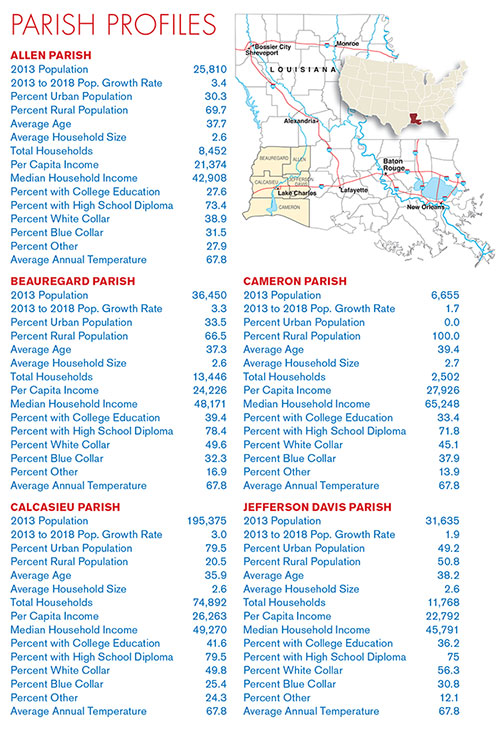 Million Air Lake Charles, a high-end fixed-base operator, recently opened a new $3-million aviation terminal facility and two new 110,000-gallon fuel tanks.
Million Air Lake Charles, a high-end fixed-base operator, recently opened a new $3-million aviation terminal facility and two new 110,000-gallon fuel tanks.- Louisiana Millwork employs 100 workers on site and is expanding its work in Louisiana and Southeast Texas.
- SOWELA Technical Community College completed a Phillips 66 Process Technology Center and an Arts and Humanities building on site and is building a Nursing and Allied Health facility. In addition, a $20-million Workforce Training Facility is in the planning phase on the new SOWELA campus at Chennault.
Lynn Hohensee, director of the West Calcasieu Port in Lake Charles, says his much smaller port serves as home base for many of the marine service companies that provide critical support to both port and offshore operations.
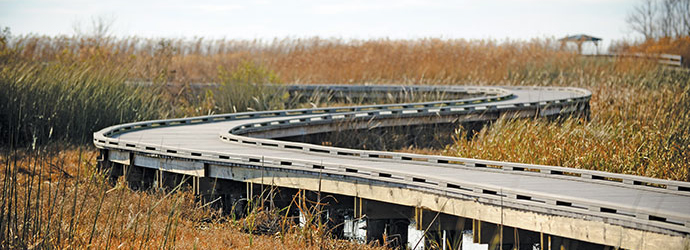
Outdoor enthusiasts find a lot to like in Southwest Louisiana. Bird-watching, hunting, fishing and bike-riding are popular pastimes here.
Photo by Lindsey Janies Photography
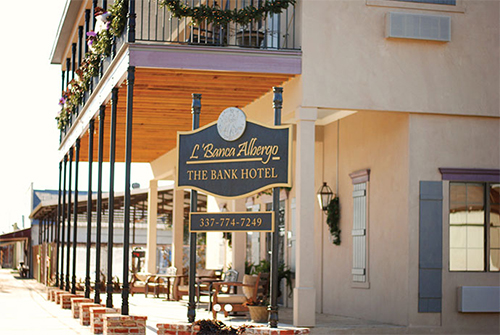
The historic Bank Hotel is a popular overnight stay for visitors to Jefferson Davis Parish.
Photo courtesy of Jeff Davis Parish Office of Economic Development and Tourism
“Our assets went from $2.9 million in 2007 to $9.5 million today, and we tripled our operating revenue in that period as well,” says Hohensee. “The growth trend here is strong. As a shallow-water port, our market scheme is different from the Port of Lake Charles. We expanded our existing barge basin by 50 percent because there is a growing number of businesses in our community that require shallow-water barge support.”
Devall Towing & Boat Service in Sulphur, La., is the port’s main tenant in the barge support sector. A family-owned business that has operated in the Lake Charles area for half a century, Devall recently signed a lease extension that will keep the business firmly anchored at the West Calcasieu Port into 2037.
“A big part of our business is the barge fleet business,” says Mike Devall, head of marine operations for Devall Towing. “We get them ready when they come into Lake Charles. We employ 15 people here and we have been doing business here since 1992.”
Devall says he likes the West Calcasieu location because “it is close to the river and the Port of Lake Charles and it is right on the Intracoastal Waterway. The next closest location is the Port of Lake Arthur about 35 miles away. We will soon be at full capacity with 130 barges here. As a result, we are geared up to have three more boats.”
Devall Towing is not the only firm growing at the West Calcasieu Port. Orion Marine Group, a marine construction company, invested $3-million to upgrade the waterfront at the port. River Barge Works, U.S. Environmental Services and TRESCO are also growing on site.
‘Metamorphic Change’ Redefines Area
In Jefferson Davis Parish, a number of industrial plants continued to grow in 2013. Among them were Louisiana Spirits, a rum distillery; Zagis USA, a cotton-spinning plant; and Leevac Shipyards, which is in line to win a major boat-building contract from Viking River Cruises.
“We are building a new $10-million SOWELA training facility in Jennings,” says Marion Fox, director of economic development and tourism for Jeff Davis Parish. “With our new rice rail-loading facility at Lacassine Industrial Park only a half mile from Interstate 10, we are an important player in agri-business.”
In the City of DeRidder in Beauregard Parish, industry keeps expanding as well. Boise Paper, Meadwestvaco, Ampacet and AmeriSafe all showed growth in 2013.
“We are developing a 1,700-acre industrial park,” says Ron Roberts, mayor of DeRidder. “We have a lot of other sites too.”
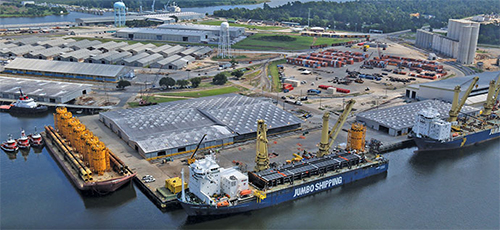
Port of Lake Charles
Photo courtesy of Southwest Louisiana Economic Development Alliance
Hohensee says the region is just getting started. “I have seen metamorphic change here over the last seven years,” he says. “The real change started three years ago. We started to see the growth of shale gas and how that would impact our region. That created new private investment interest here.”
He adds that “we have a heritage of embracing the oil and gas industry. We also have the infrastructure in place to support it. For this area, it has been an economic development perfect storm.”
This Investment Profile was prepared under the auspices of the Southwest Louisiana Economic Development Alliance. For more information, contact George Swift at 337-433-3632 or by email at gswift@allianceswla.org.
